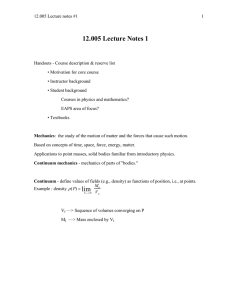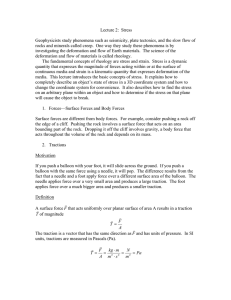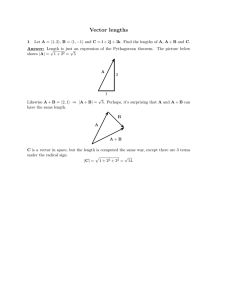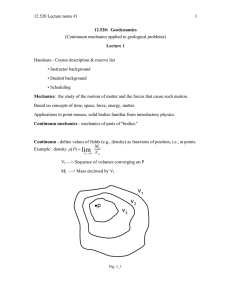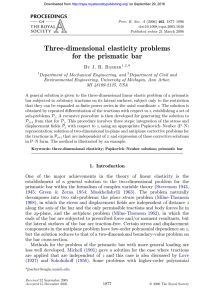12.005 Lecture Notes 2 ( ) τ
advertisement
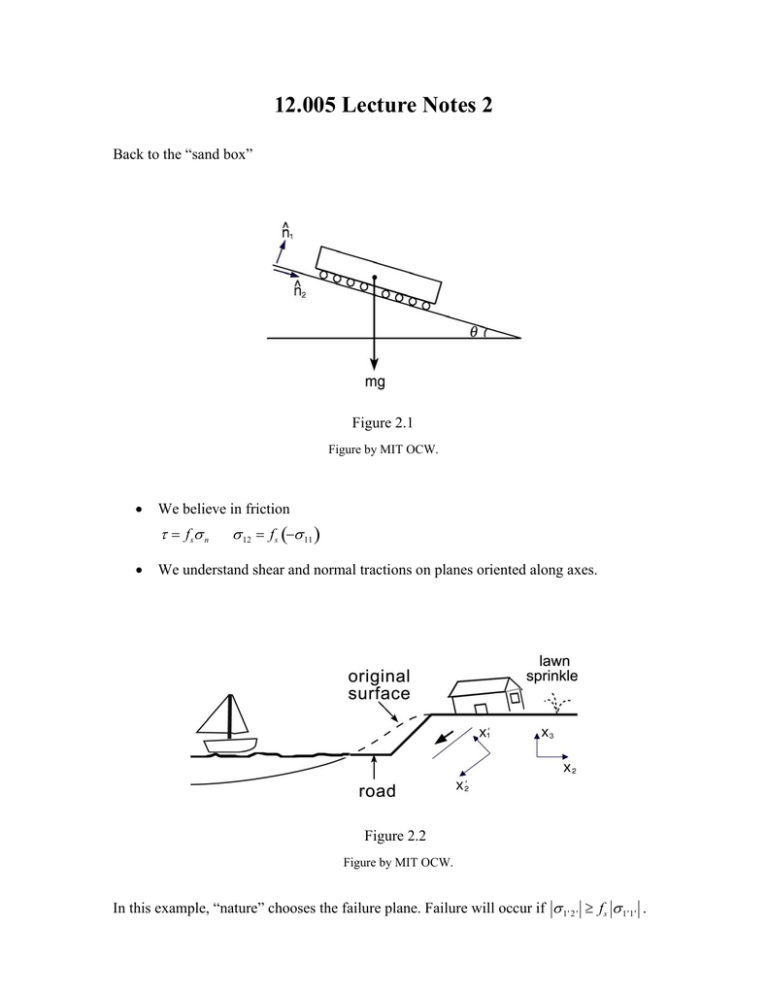
12.005 Lecture Notes 2 Back to the “sand box” Figure 2.1 Figure by MIT OCW. • We believe in friction τ = fsσ n σ 12 = fs (−σ 11 ) • We understand shear and normal tractions on planes oriented along axes. Figure 2.2 Figure by MIT OCW. In this example, “nature” chooses the failure plane. Failure will occur if σ 1' 2 ' ≥ fs σ 1'1' . How do we relate this to our “prior” coordinate system? Tractions (or Stress Vector) A surface force F that acts uniformly over planar surface of area A results in a traction T of magnitude F T = A The traction is a vector that has the same direction as F and has units of pressure. In SI units, tractions are measured in Pascals (Pa). T= F kg ⋅ m N = 2 2 = 2 = Pa A m ⋅s m Since tractions are vectors, they can be decomposed into normal and tangential vector components. σn and τ denote the magnitude of these components. T = Ttan gential + Tnormal σ n = Tnormal τ = Ttan gential Traction depends on the area of the surface over which it acts. Since area often changes with the orientation of the surface, the values of σn and τ do not behave like vector components when the surface orientation changes. The decomposition of tractions into normal and shear components is useful in writing Admonton’s Law in terms of tractions. This new form of Admonton’s law is the link between stress and failure across a plane. Admonton’s law relates a normal force and a tangential force by a proportionality constant called the coefficient of static friction fs: Ftan gential = f s ⋅ Fnormal Dividing both sides of the equation by the area A over which the forces act leads to Admonton’s law in terms of tractions: τ = fs ⋅σ n Consider a small planar element of area δS passing through P. n̂ is unit normal vector (positive arbitrary, usually chosen outward for closed body). F ~+ x3 n P �S x2 o x1 Figure 2.3 Figure by MIT OCW. Plane cuts material M. M+ is material on + side and M- is material on – side. In general, M+ exerts force F+ on M- and M- exerts force F- on M+ . Tractions at a point Tractions at a point are difficult to conceptualize because the area at a point over which a force acts is infinitesimal. Despite this difficulty, the concept of point tractions is extremely important because it allows one to find the traction on an arbitrary plane. The Cauchy stress principle states that as the area around P shrinks to zero (see Figure 2.3), the following limit holds F+ =T δ S →0 δ S lim T is called the traction or stress vector at point P. The (n̂) is a reminder that this stress vector is defined only for a particular plane through P with normal vector (n̂) . Moments? M+ could exert a moment on M-. In general, moment → 0 as δS → 0 . Tractions are surface forces. Surface moments don’t exist. Body moments can exist, e.g., magnetism.
